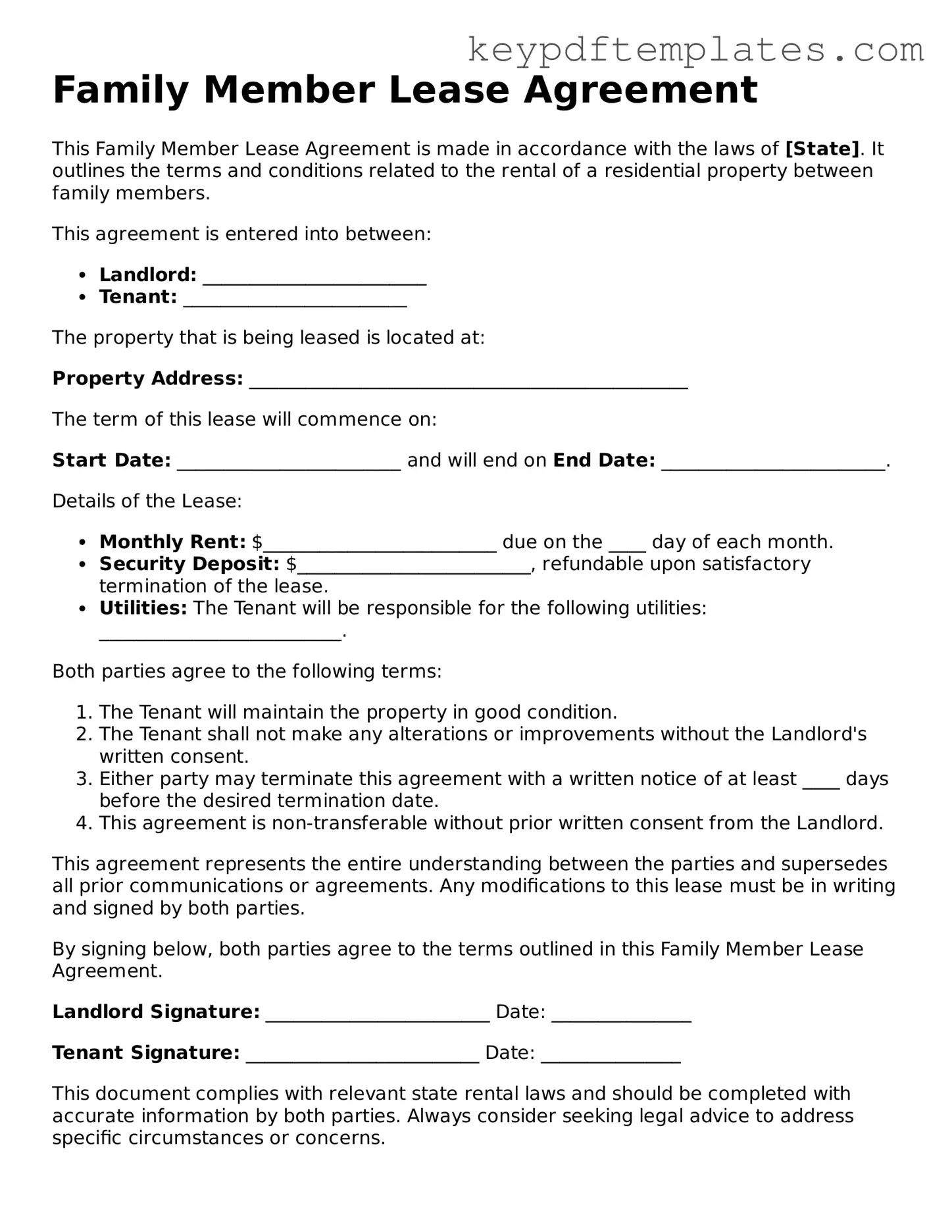Printable Family Member Lease Agreement Template
The Family Member Lease Agreement form is a document that outlines the terms and conditions under which a family member can rent a property from another family member. This agreement helps clarify expectations and responsibilities, ensuring a smooth living arrangement. Understanding this form is essential for both landlords and tenants to maintain a positive relationship.
Modify Document Online
